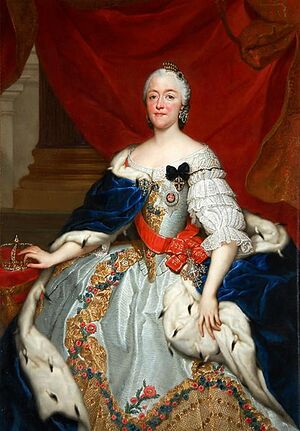Duchess Maria Antonia of Bavaria
Maria Antonia of Bavaria | |
|---|---|
Maria Antonia Walpurgis Symphorosa von Bayern | |
 Maria Antonia Walpurgis von Bayern, Mengs, 1752 | |
| Born | July 18, 1724 Nymphenburg Palace, Munich, Electorate of Bavaria |
| Died | April 23, 1780 (aged 55) Palace in Dresden , Dresden , Electorate of Saxony |
| Resting place | Hofkirche (Dresden) |
| Other names | Ermelinda Talea Pastorella Arcadia ( ETPA ) |
| Education |
|
| Occupation | Regent, entrepreneur, composer, librettist, poetess, singer, harpsichordist |
| Title |
|
| Predecessor | Maria Josefa of Austria |
| Successor | Amalia von Zweibrücken-Birkenfeld |
| Spouse(s) | Frederick Christian of Saxony |
| Children |
|
| Parents |
|
| Family | Wittelsbach |
Maria Antonia of Bavaria(18 July 1724 ‐ 23 April 1780) was a politician, musician, poetess, librettist, composer and entrepreneur. As the eldest remaining daughter of Charles Albert of Bavaria (later Charles VII, Emperor of the Holy Roman Empire), she received an excellent science and arts education.
Maria Antonia as an artist
Her birth was celebrated with Pietro Torri's opera Amadis de Grecia. In her youth in Munich, she received composition lessons from the renowned opera composers Giovanni Battista Ferrandini and Nicola Antonio Porpora. The festivities at her wedding to Frederick Christian of Saxony (1747) featured Christoph Willibald Gluck's opera Le nozze d'Ercole e d'Ebe and Johann Adolf Hasse's La Spartana generosa.
In Dresden, she continued her musical studies with Johann Adolf Hasse and Nicola Porpora and felt particularly attached to the style of opera seria. She appeared as a singer and harpsichordist in performances of her own works in this genre as well as in numerous performances at court. In 1747 she was admitted to the Accademia dell'Arcadia in Rome, an internationally active literary academy and institution for the reform of opera.[1] The members interacted with each other without regard to their class distinctions and, in the spirit of a simple, natural country life adopted shepherds' names (pseudonyms) for this purpose. Maria Antonia received the name Ermelinda Talea Pastorella Arcadia (ETPA).
Among many other artists and scientists, she also supported the Kapellmeister Johann Gottlieb Naumann and the painter family Mengs.(Abbridged from Wikipedia)
Among her works are:
- Il trionfo della fedeltà (opera, performed at Dresden in 1754, libretto and music by Maria Antonia);
- Talestri, regina delle Amazzoni (opera, performed in 1760 at Nymphenburg, libretto and music by Maria Antonia);
- La conversione di Sant'Agostino (oratorio, performed in Dresden in 1750, libretto by Maria Antonia, music by Johann Adolf Hasse).
Maria Antonia of Bavaria in Philippe Jaroussky's discography, filmography and performance history
Studio albums
| Year | Title | Studio album |
|---|---|---|
| 2020 | "Si, solo a te mio dio" ... "Il rimorso opprime il seno" | La Vanità del Mondo (Album) |
On video
Concert programs
| Year | Title | Concert program |
|---|---|---|
See the respective program page for a list of possible recordings.
Complete list of musical pieces using words by Maria Antonia of Bavaria
This listing only reflects the musical pieces performed by Philippe Jaroussky.
| Year published or performed | Title | Composer | Work | Album, video or concert program | Year first published/performed |
|---|---|---|---|---|---|
| 2020 | Johann Adolph Hasse | "Si, solo a te mio dio" ... "Il rimorso opprime il seno" | La conversione di Sant' Agostino | La Vanità del Mondo (Album) | 1750[1] |
References
- ↑ "Maria Antonia von Bayern". Wikipedia. Archived from the original on 6 October 2021. Retrieved 6 October 2021.